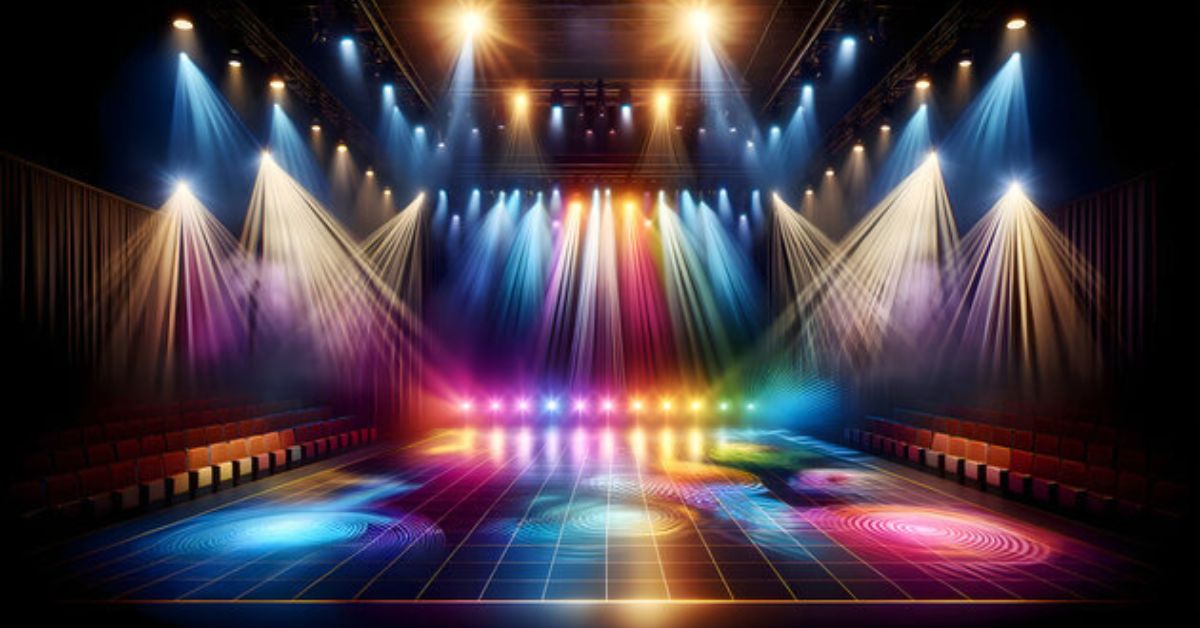Have you ever been to a performance where the stage lighting colors completely changed the mood of the stage? Lighting color plays a crucial role in creating atmosphere and conveying emotions during a show.
Stage lighting fixture design is an artwork shape that calls for careful attention to shade alternatives to evoke the audience’s preferred emotions. Understanding how exclusive theater lighting design and shades can affect temper can enhance the overall experience of your audience.
In this guide, we will explore the power of stage lighting color and how you can master the art of using it effectively to set the mood for your performances. Whether you are a theater director, event planner, or lighting designer, learning how to manipulate lighting color can take your production to the next level.
Exploring the Different Types of Stage Lights
From floodlights to moving lighting, degree lights offer a various array of alternatives for illuminating performances. Each type serves a completely unique reason, whether or not it’s highlighting performers, putting the mood, or growing dynamic visible outcomes.
Floodlights
These lighting emit a broad, even beam of light, frequently used for fashionable stage illumination or washing large areas with mild.
Spotlights
Spotlights produce a focused, slender beam of light, allowing particular highlighting of performers or set factors.
Fresnel Lights
Fresnel lighting fixtures feature a stepped lens layout that produces a tender-edged beam, best for growing easy washes of light or gentle spot effects.
PAR Cans
PAR (Parabolic Aluminized Reflector) can produce a concentrated beam of light, suitable for accent lighting fixtures or developing colorful coloration washes.
LED Lights
LED (Light-Emitting Diode) lighting fixtures are energy-efficient and versatile, imparting a wide range of stage lighting colors and effects. They may be used for various functions, including wash lighting fixtures, spotlighting fixtures, and dynamic color adjustments.
Moving Lights
Moving lighting, additionally referred to as sensible lighting fixtures, are furnishings that could pan, tilt, and alternate colorations or styles electronically. They are especially versatile and can create dynamic lighting fixture outcomes, including transferring beams, gobo projections, and strobing effects.
Strip Lights
Strip lights include lengthy, slim furniture containing multiple small bulbs or LEDs organized in a line. They are frequently used for decorative functions or to provide subtle accent lighting.
Profile Lights
Profile lights, additionally called ellipsoidal or ERS (Ellipsoidal Reflector Spotlight) lighting fixtures, produce a precise, controllable beam of light with sharp edges. They are generally used for highlighting precise areas or developing specific styles on a level.
These are only a few examples of the numerous stage light color combinations available, each imparting unique skills and consequences to beautify theatrical performances and create immersive visual reports.
Stage Lighting Colors
Stage lighting fixtures are an effective artistic medium that can remodel the mood and environment of an overall performance with a trifling flick of a transfer.
Among its many sides, color is a critical element in eliciting emotional responses and shaping audience perceptions.
Let’s delve into the arena of level light coloration, including green stage lighting, and discover how it can be masterfully employed to awaken a range of emotions and beautify storytelling to a degree.
Green Stage Lighting
Green lighting fixtures hold the energy to evoke a myriad of feelings and associations. Often related to nature, growth, and renewal, green lighting fixtures can create a feeling of tranquility and harmony on stage.
However, when used along with other factors, which include eerie music or mysterious set designs, inexperienced lighting fixtures can also instill feelings of unease or foreboding, making it a flexible tool for creating tension and suspense in theatrical productions.
You can also take the help of light rentals for events, as every event deserves to be celebrated!
Lighting Color Wheel
At the coronary heart of every lights dressmaker’s toolkit lies the lights color wheel, a visible resource that guides the choice and aggregate of colors to acquire preferred effects on stage.
By knowing the relationships among number one, secondary, and tertiary colorations, designers can craft dynamic light color schemes that enhance the temper and subject of overall performance.
The color wheel allows designers to explore triadic, analogous, and complimentary shade combinations, unleashing their creativity and enthralling audiences with visually captivating displays.
Light Color Schemes
In stage lighting, exceptional color schemes evoke distinct emotions and produce precise topics. Warm hues like reds, oranges, and yellows radiate strength, ardor, and heat, perfect for growing dramatic and excessive atmospheres.
Conversely, cool colorings such as blues and purples evoke emotions of tranquility, disappointment, or thriller, adding intensity and complexity to a scene.
By strategically incorporating warm effects with red stage lighting and cool hues into their lighting fixture designs, designers can create captivating contrasts and enlarge the emotional impact of a performance.
Red Stage Lighting
Red lighting fixtures instruct attention and exude depth, making it a mighty device for growing dramatic and evocative scenes on stage. Pink lights can heighten the emotional intensity of key moments or characters in a performance by symbolizing ardor, hazard, and urgency.
However, designers should exercise warning while using purple lighting fixtures, as its overuse can weigh down the senses and create a feeling of claustrophobia or unease among audiences.
By judiciously placing the right balance of lighting color wheel and using crimson lighting fixtures, designers can harness their power to enlarge emotions and captivate audiences.
Stage Light Color Combinations
The maximum compelling lighting designs regularly arise from the strategic combination of colors to create depth, contrast, and visual interest on stage.
By experimenting with one-of-a-kind shade combos and intensities, designers can evoke complex feelings, decorate storytelling, and captivate audiences’ imaginations.
Whether juxtaposing heat and funky colorations to create tension or mixing complementary shades to awaken concord, the possibilities for innovative expression are infinite.
Through innovative color mixtures, designers can raise their lighting fixture designs from practical to super, leaving an enduring impression on audiences.
Types of Stages and Recommended Lighting
Stage Type |
Recommended Lighting |
| Proscenium Stage | Warm lighting for intimate scenes, excellent lighting for tense moments or outdoor settings |
| Thrust Stage | Dynamic combination of warm and cool lighting for versatility and depth |
| Arena Stage | Flexible lighting design to accommodate 360-degree audience view, often using vibrant colors and dynamic effects |
| Black Box Theater | Customizable lighting schemes to adapt to diverse productions, allowing for experimentation with various color palettes |
| Outdoor Stage | Natural lighting supplemented with subtle hues for ambiance, adaptable to time of day and weather conditions |
Conclusion
Mastering mood through stage light color schemes is a blend of art and science, demanding a profound grasp of color theory, psychology, and storytelling. Lighting designers wield the emotional potency of colors and innovative techniques to craft immersive experiences that linger in the minds of audiences well beyond the final act.
Whether employing green lighting to instill tranquility, red lighting to heighten intensity, or blending dynamic color combinations for visual impact, each choice is deliberate and strategic. By understanding how colors evoke emotions and enhance narrative elements, designers transform mere illumination into a powerful storytelling tool.
The interaction of light and shadow creates a captivating dance that sets the tone, evokes emotions, and enhances the target market’s connection to the performance. In the hands of professional designers, degree light coloration becomes an indispensable device for breathing life into productions, enveloping spectators in colorful and captivating worlds of theatrical magic.

